Reports
Imagery Update: Iran Adds Expected Fourth Tunnel Entrance to its Natanz Tunnel Complex [1]
by David Albright and Sarah Burkhard
November 9, 2022
This report is an imagery update of earlier reports on the construction progress at the new Natanz tunnel complex, located under a mountain south of the main uranium enrichment site, slated to house a large-scale advanced centrifuge assembly facility and possibly a new uranium enrichment plant. Commercial satellite imagery from September and October 2022 shows Iran completed the expected second western tunnel entrance, for a total of four tunnel entrances. With the fourth entrance completed, the external excavations appeared to have ceased for now, but progress inside the tunnel is uncertain and is slower than expected. However, as is the case at Fordow, we might also see some additional external work for the emplacement of support services such as heating, ventilation, and cooling. Water flow appears visible at two entrance portals in October 2022, and of the three pre-existing tunnel entrances, only one shows notable visible changes since May 2022. Also newly visible is some linear ground scraping near the Eastern main tunnel entrance that could be preparations for a new inner security perimeter in advance of initial equipment installation. Few expect the plant to be operational in 2022 or possibly even in 2023. Nonetheless, there is a need for Iran to clarify to the International Atomic Energy Agency (IAEA) just what this complex will contain, and when it will become operational.
Purpose of Site
The full purpose of the underground complex remains unknown. Based on official Iranian accounts, the new tunnel complex is intended to house a new, large centrifuge assembly facility to replace the Iranian Centrifuge Assembly Center (ICAC) destroyed in an attack in July 2020. If this plant has the same size as the destroyed facility, it will be able to assemble about 8,000 IR-2m and IR-4 centrifuges per year, 2</suproviding a capability to greatly and rapidly expand Iran’s centrifuge enrichment capability after 2025, even under the limits of the Joint Comprehensive Plan of Action. 3
There is concern that the new tunnel complex will also hold a gas centrifuge enrichment plant with a capacity rivaling that of the Fordow enrichment plant. A January 2022 Institute analysis found that the new complex will likely be more deeply buried than Fordow and have significantly more floor space, raising questions about other sensitive nuclear activities at the site, most worrisome, enrichment activities.4 According to knowledgeable Western government experts interviewed in the summer, their government had assessed that this site will also house a gas centrifuge enrichment plant, although no concrete evidence was provided to conclude that a centrifuge plant was being planned at the site.
Construction Progress
Figure 1 shows the location of the tunnel complex relative to the Natanz underground enrichment halls, the destroyed ICAC, and an existing tunnel in a nearby mountain built in 2007. Figure 2 provides an overview of the tunnel complex under construction as of October 25, 2022, with a total of four tunnel portals visible now (two eastern and two western portals). Figure 3 provides a close-up of the new tunnel entrance on the western side.
Two of the four portals feature tunnel entrance extensions. Figures 4 and 5 show the tunnel entrances and their extensions in October 2022, situated in a channel of excavated rock, allowing coverage with earth and providing significant additional protection to the tunnel portals. The eastern auxiliary tunnel entrance extension is covered and has progressed since May, while the pre-existing western tunnel entrance extension appears largely unchanged. Figure 4 also shows some newly cleared areas and ground scrapping, possibly in preparation for a new security perimeter.
Water is appearing to flow from the eastern main portal, previously visible in November 2021 and May 2022, and visible again in October 2022 (see Figure 6). In addition, water flow is also visible in the recent imagery at the western main portal (see Figure 7). It is unknown if the water is uncontrolled outflow from the eastern and western main portals, possibly representing an unexpected construction challenge.
Two of the three spoil piles associated with the tunnel construction continued to grow, suggesting additional excavation, but the full significance of the additional excavation could not be determined. The small visible changes in a large spoil pile near the eastern tunnel entrances appear consistent with nearby visible ground scraping. A spoil pile near the main western portal remained largely unchanged. However, another spoil pile near the western tunnel entrances grew considerably since last spring (see Figure 8). This could be from the excavation of the new tunnel portal, but the extent and color of the pile suggests tunneling deeper into the mountain.
There has been no visible evidence of centrifuge manufacturing or centrifuge-related equipment being moved into the tunnel complex. There is increasing doubt that such transfers will occur this year or possibly even next year. Iran appears to be experiencing problems in finishing the tunnel complex, typically a necessary step before equipment is installed.
Figure 1. The tunnel complex under construction lies south of the main Natanz enrichment plant.
Figure 2. An October 2022 overview image of the tunnel complex shows the new, fourth tunnel entrance (labeled as the “New auxiliary Western portal”)
Figure 3. A close-up of the new tunnel entrance shows the entrance completed as of September 2022.
Figure 4. One of the two eastern tunnel portals shows a likely permanent tunnel entrance extension, adding further protection to the entrance. It has progressed in recent months.
Figure 5. The pre-existing western tunnel entrance also features a new entrance extension, likely to be covered by earth in the future. It appears largely unchanged since May 2022.
Figure 6. Possible water flow at the eastern main tunnel portal.
Figure 7. Water flow at the western main tunnel portal.
Figure 8. A comparison of the spoil pile near the western tunnel entrances from May 2022 (top) to October 2022 (bottom).
1. For earlier reports on the tunnel complex, see David Albright and Sarah Burkhard, “Imagery Update: Iran Continues to Harden its New Natanz Tunnel Complex,” Institute for Science and International Security, May 5, 2022, https://isis-online.org/isis-reports/detail/imagery-update-iran-continues-to-harden-its-new-natanz-tunnel-complex-2022/8; David Albright, Sarah Burkhard, and John Hannah, “Iran’s Natanz Tunnel Complex: Deeper, Larger than Expected,” Institute for Science and International Security, January 13, 2022, https://isis-online.org/isis-reports/detail/irans-natanz-tunnel-complex-deeper-larger-than-expected/8↩
2. In 2016, the ICAC was being built with a capacity to assemble 200 IR-2m and IR-4 centrifuges per week, according to an expert knowledgeable about the details of the ICAC. Assuming the plant operated 80 percent of the time, it would have had the capacity to assemble over 8000 advanced centrifuges per year. ↩
3. David Albright, Sarah Burkhard, and Spencer Faragasso, “The Nuclear Deal in Charts, Assuming a Revived Nuclear Deal,” Institute for Science and International Security, October 20, 2022, https://isis-online.org/isis-reports/detail/the-nuclear-deal-in-charts-assuming-a-revived-nuclear-deal ↩
4. “Iran’s Natanz Tunnel Complex: Deeper, Larger than Expected.” ↩

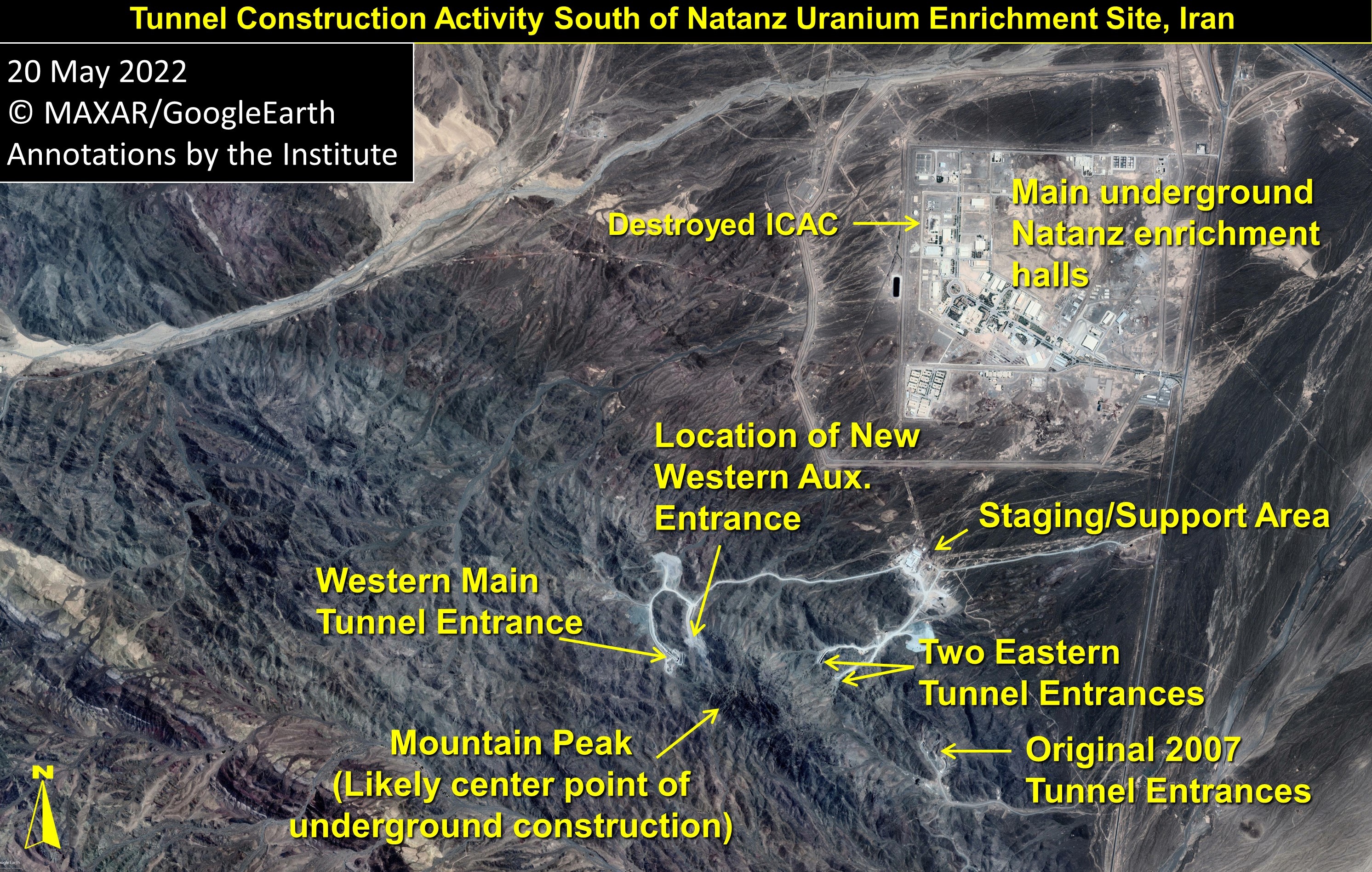
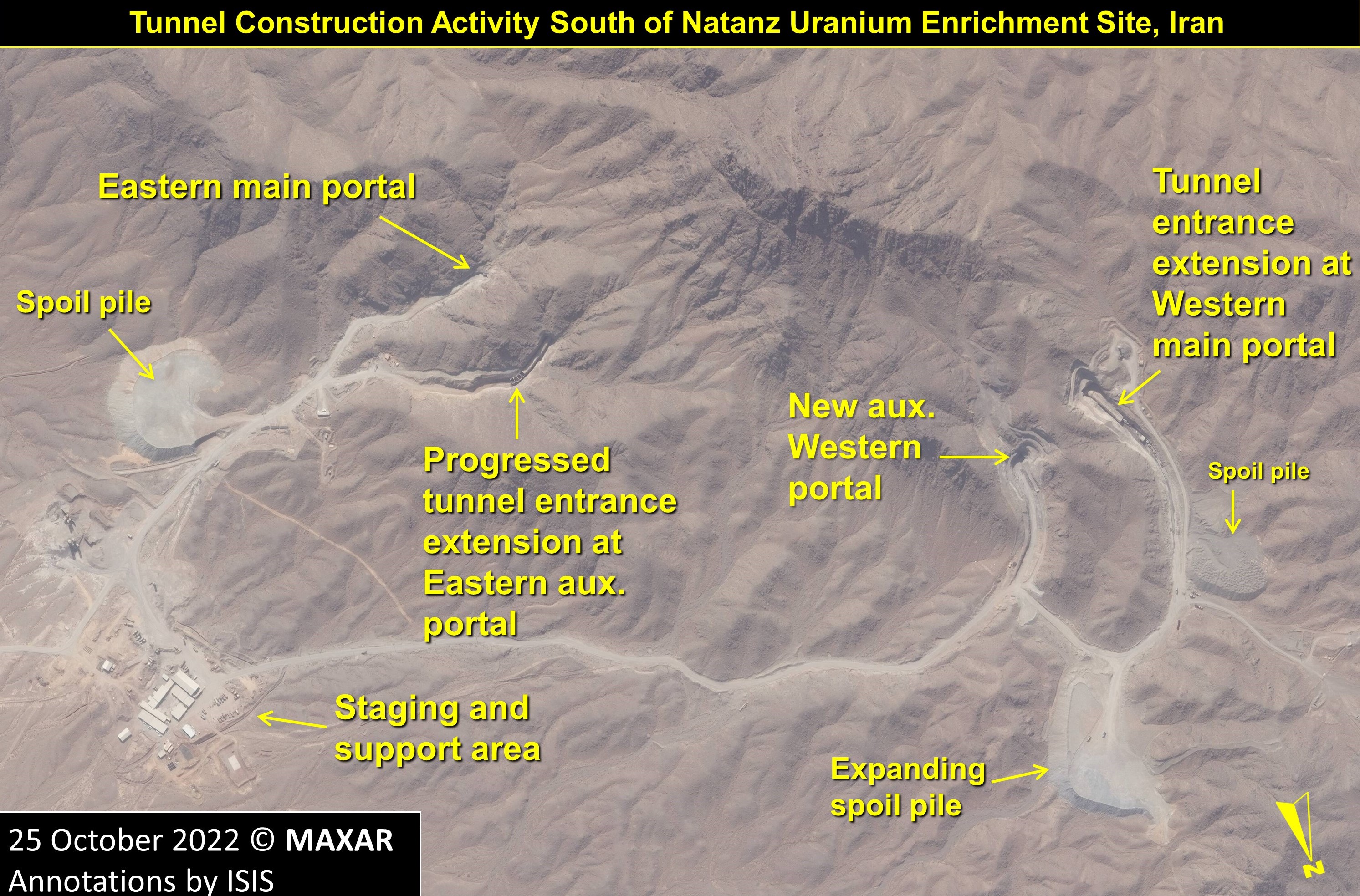
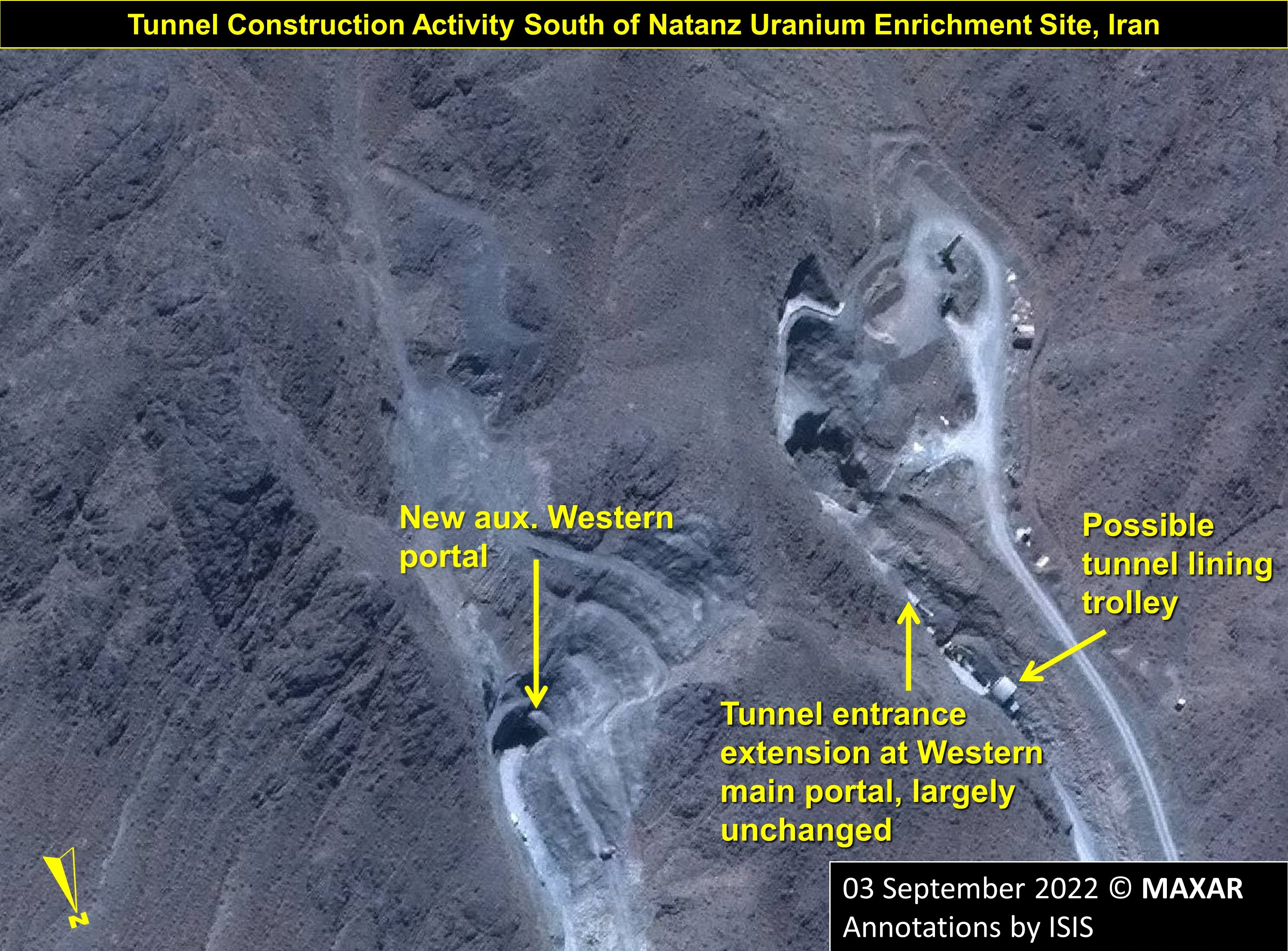
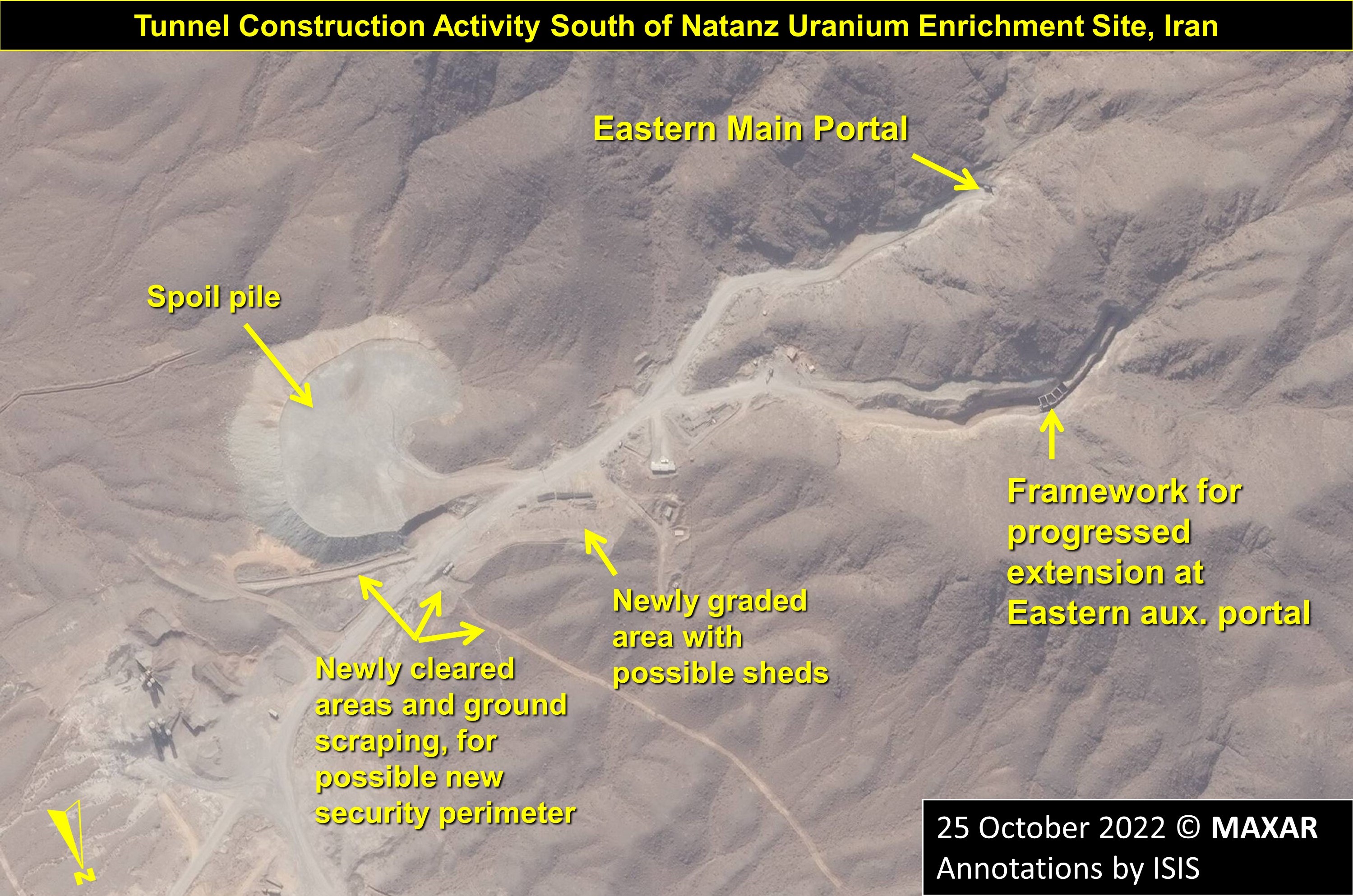

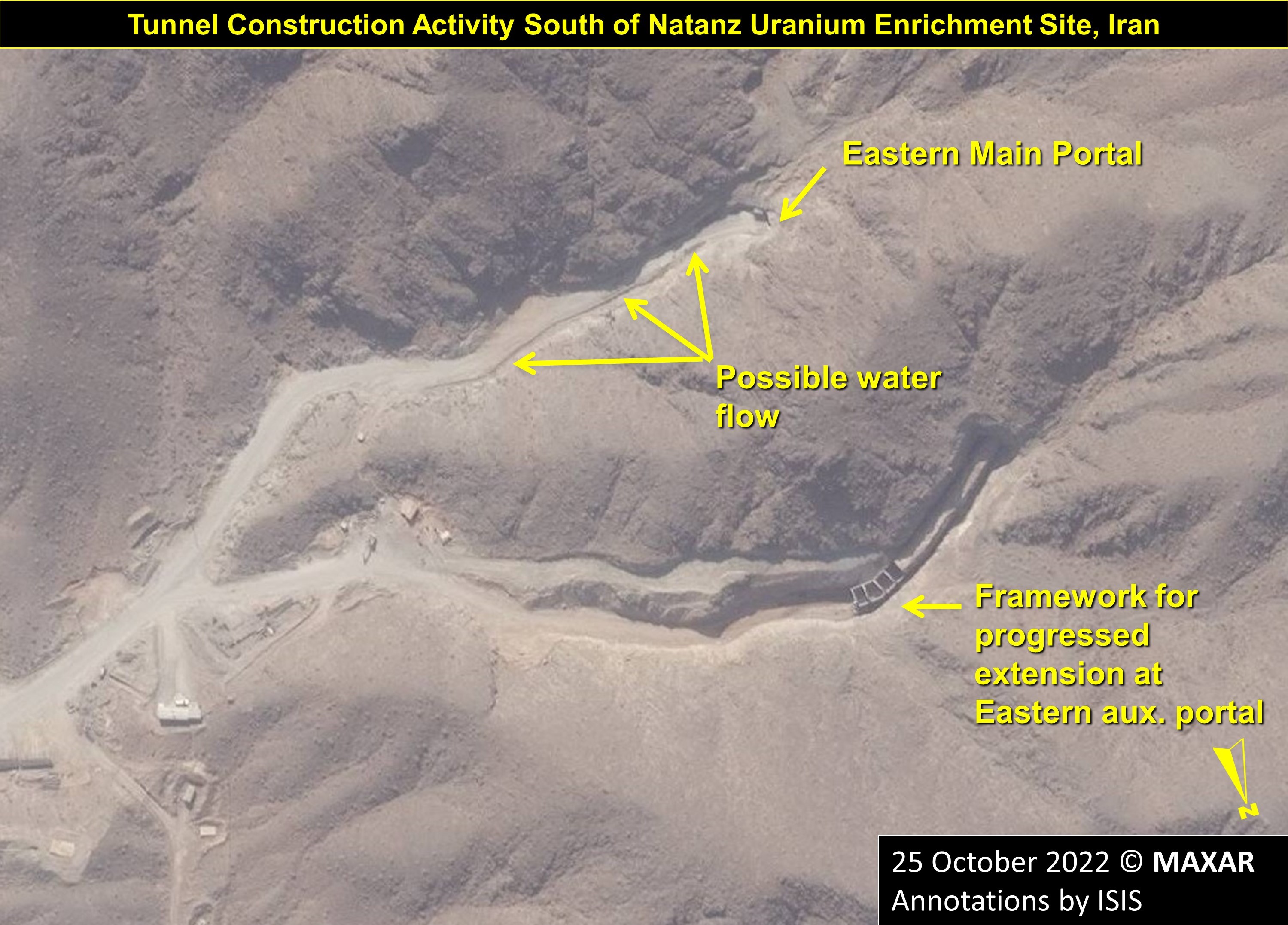
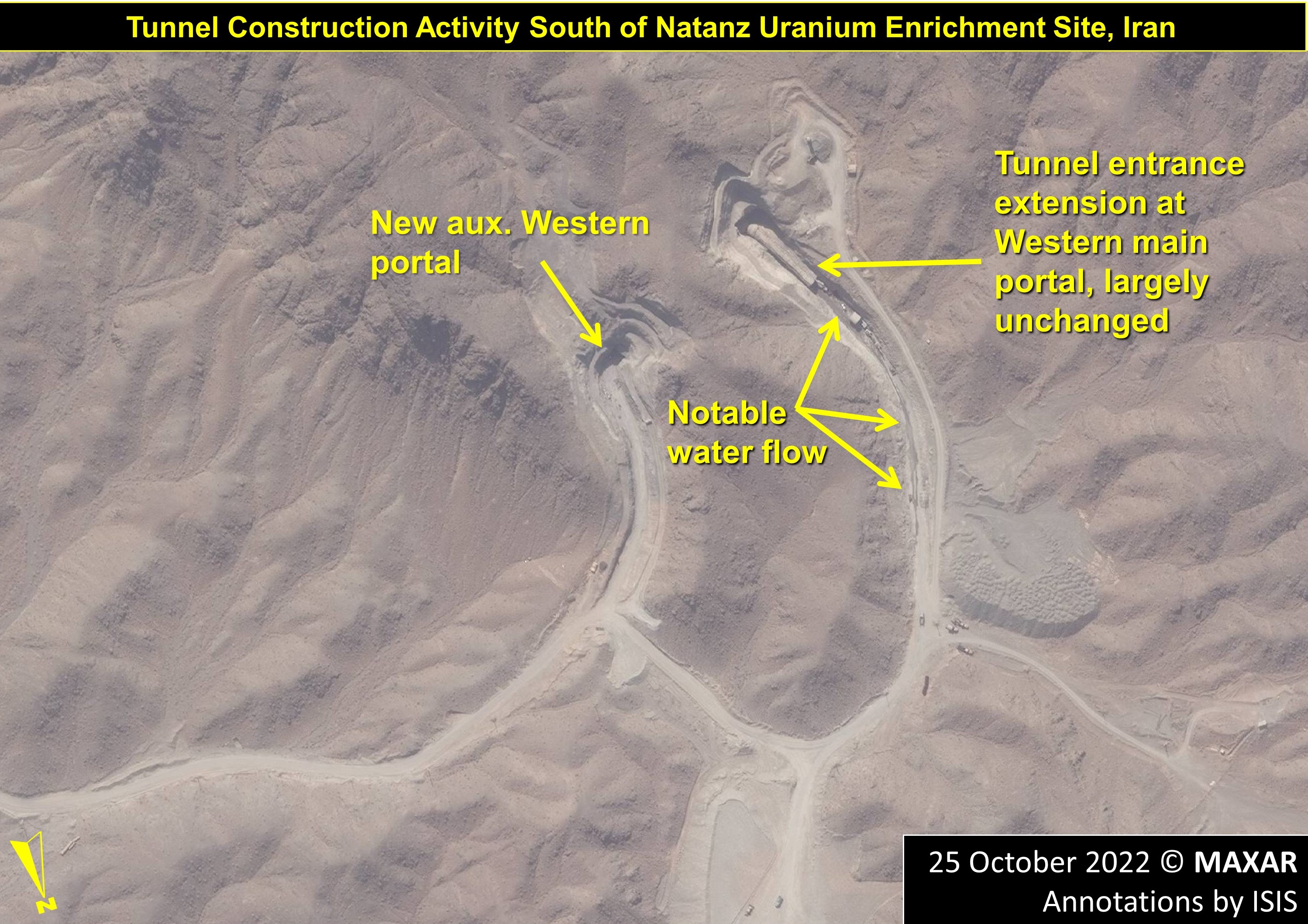
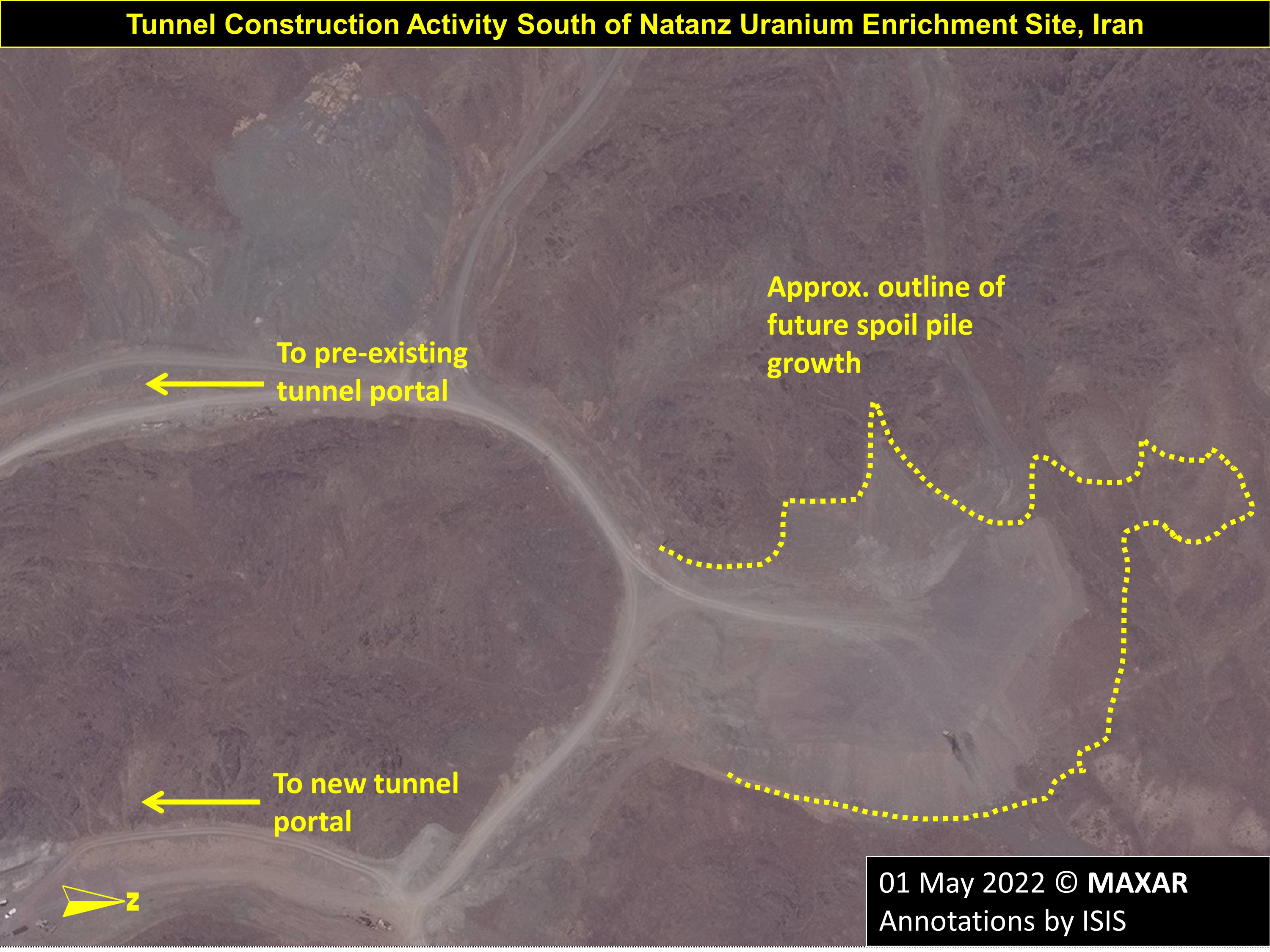
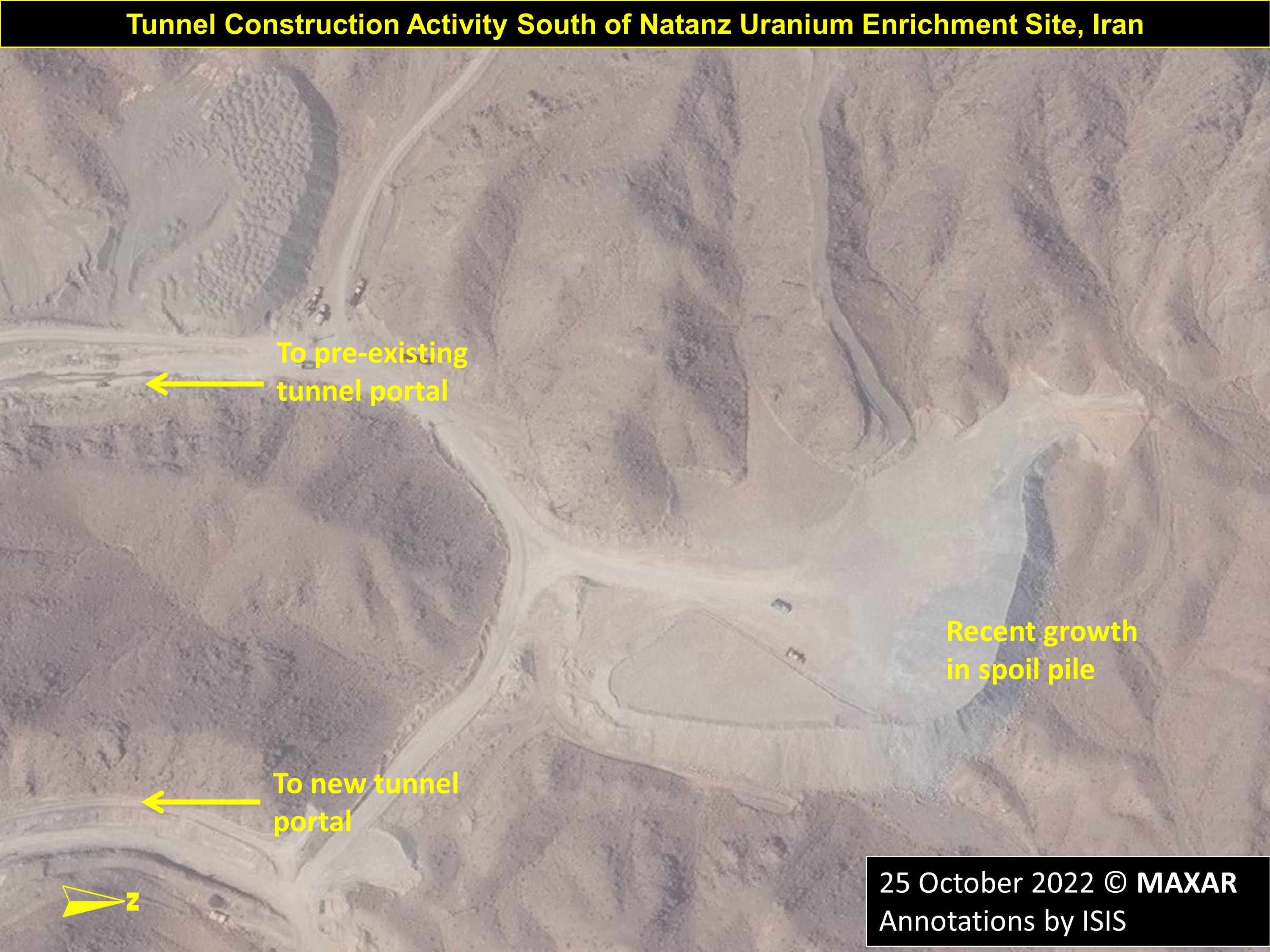
 twitter
twitter